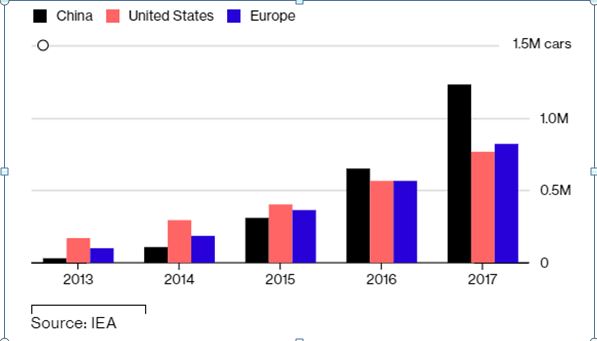Electric Vehicles Set to Triple in 2 Years
 Maharshtra Roads will see EVs on rent
Maharshtra Roads will see EVs on rent
A new report by the International Energy Agency, usually considered very conservative when it comes to projections on electric transport, predicts that the number of electric vehicles on the roads will more than likely increase three-fold over the next two years. The global fleet of electric vehicles is likely to hit 13 million by the end of the decade from 3.7 million last year, according to a report released Wednesday from the Paris-based institution, which was set up to advice industrial nations on energy policy.
Pierpaolo Cazzola, senior energy and transport analyst at the IEA and one of the authors of the report said, “The dynamic policy developments that are characterizing the electric car market are expected to mobilize investments in battery production, facilitating cost reductions and ensuring that battery production takes place at scales that exceed significantly what has been seen so far.”
According to the report, China would remain the global leader of the EV market.

More than half of global sales in 2017 were in China, thanks to the reforms being introduced by the Chinese government. Putting in place a number of policies to encourage EVs, in an effort to cut air pollution in its suffering cities. In 2017, the government in Beijing set minimum requirements for domestic carmakers on electric vehicle production through a credit trading system. It also extended a 10 percent tax rebate for consumers until 2020. Electric vehicles are expected to take just over a quarter of vehicles sold in the Asian nation by 2030, up from 2.2 percent last year, according to the IEA’s estimates.
City buses will go green and have the largest impact on the environment. There will be 1.5 million electric buses in use worldwide by 2030, up from 370,000 last year, according to the IEA.
Almost 100,000 electrified city buses were sold last year, 99 percent of them in China. The Chinese city of Shenzhen is leading the pack with an all-electric bus fleet. A number of cities in Europe’s Nordic region such as Oslo, Trondheim and Gothenburg also have electric buses in operation.
A major impact will be upon the governments of different countries as with the increase in EVs the road fuel taxes will take a big hit. Forcing governments to make reforms or find other avenues for generating the tax. Governments around the world may lose out on $42 billion in tax revenue from road fuel sales by 2030 in the IEA’s central scenario. In the report’s most aggressive forecast for EV uptake, it was as high as $92 billion. Last year, China’s fuel tax revenue was already cut by $2.6 billion because of the growing share of electric vehicles on the country’s roads, the IEA said.
A big factor that has not been weighed in is, of course, the impact of India. The world’s fourth-largest auto market has done precious little on the EV front so far, and the FAME (Faster adoption and Manufacturing go hybrid and electric vehicles) schemes promise a lot. In fact, assuming a smooth transition to electric buses for China, it will not be a surprise if these make a big splash in India too, where the bus transport fleet in most large cities is already aged and deteriorating, as this report by Iamrenew pointed out.
![]()




